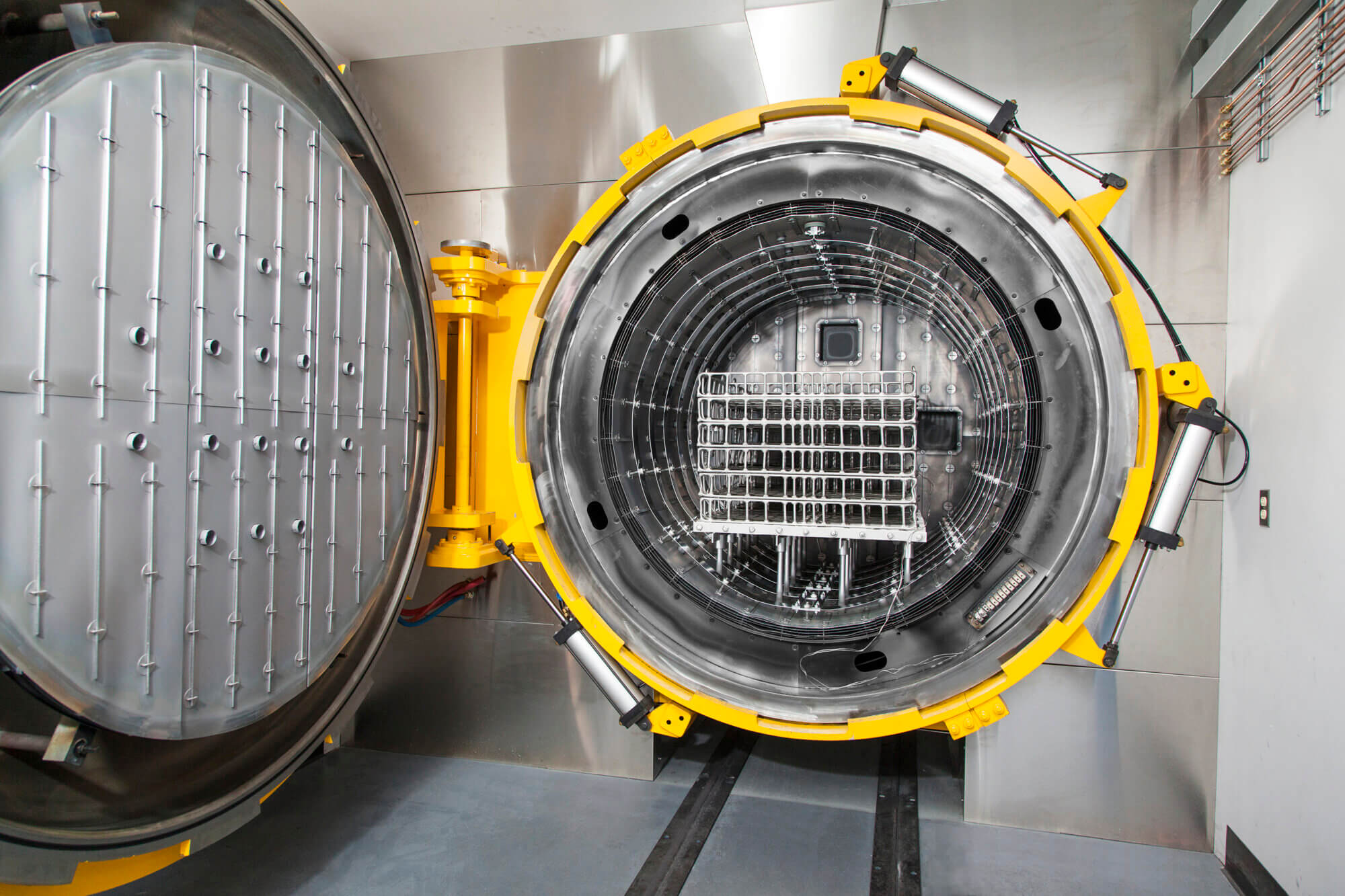Ask the Expert: Solar Atmospheres’ Vice President of Sales Answers Questions About Heat Tint When Precipitation Age Hardening 17-4PH Stainless in Vacuum
1: When I send my 17-4PH parts out for vacuum age hardening they are returned with discoloration. Isn’t the purpose of vacuum heat treating to eliminate that?
It is not uncommon for 17-4PH and similar alloys (15-5PH, 13-8MO etc.) to exhibit some discoloration even after being processed in a vacuum furnace. 17-4PH is precipitation age hardened at a low temperature, between 900°F-1150°F, where even a relatively low residual of water vapor in the vacuum furnace may produce a slight Chromium oxide during the cycle. This is commonly called “heat tint”. Discoloration may also be caused by inadequate cleaning.
2: I have some 17-4PH parts with heat tint and my customer will not accept them as-is. What do I do?
Consider glass bead blasting if acceptable to your customer. If glass bead blasting is not acceptable, parts could potentially be solution treated and re-aged. The solution heat treatment temperature is 1900°F. When vacuum is used, this temperature is in the range of Chromium oxide reduction. It is recommended to utilize a partial pressure with Argon to prevent the vaporization of the copper that exists in 17-4PH (not a concern at age hardening temperatures). A challenge is 17-4PH must be cooled below 90°F after solution treatment (Ms finish) and this is generally not possible to achieve without removing the parts from the furnace, thereby reintroducing new water vapor between solution and age. There is a risk of size change or distortion from this process, and it should be avoided if possible.
3: What is the best way to reduce the risk of heat tint when vacuum age hardening 17-4PH?
The best way to avoid heat tint is to utilize an all-metal hot-zone vacuum furnace that will achieve a very low vacuum level, around 5×10-6 Torr. In this case, the residual water vapor level will be so low heat tint should not be observed.
 4: I currently only have access to a graphite-insulated vacuum furnace, what can I do to avoid heat tint during age hardening?
4: I currently only have access to a graphite-insulated vacuum furnace, what can I do to avoid heat tint during age hardening?
If the vacuum furnace hot-zone is graphite-insulated (the most common type of vacuum furnace), parts may be shielded with stainless steel or titanium foil. This is generally effective however it increases the total processing time (and cost) since parts are shielded from the energy in the furnace. Foil is not inexpensive and further increases cost. Foil is also a safety hazard; the edges are sharp and one wrong move can cause deep cuts to skin.
5: Is gas purity, dewpoint, and leak rate of the vacuum furnace a consideration in avoiding heat tint?
Yes! Process gas should have no more than about 10PPM of residual oxygen and a dewpoint below about -80°F. If the gas isn’t clean and dry, everything else will have been in vain. This is usually monitored at the point furthest from the supply to detect any leaks in the overall system. The vacuum furnace should also have a very low leak rate, normally about 10 microns per hour or less. At that rate, assuming the rise is linear (which it will not be, it slows down as the Delta P decreases) it would take nearly 9 years for the furnace to leak up to atmospheric pressure.
For more information: Vacuum Age Hardening
And featured in Today’s Medical Developments: https://www.todaysmedicaldevelopments.com/article/questions-with-mike-moyer-ask-the-expert-heat-tint-age-hardening-vacuum/


 4: I currently only have access to a graphite-insulated vacuum furnace, what can I do to avoid heat tint during age hardening?
4: I currently only have access to a graphite-insulated vacuum furnace, what can I do to avoid heat tint during age hardening?